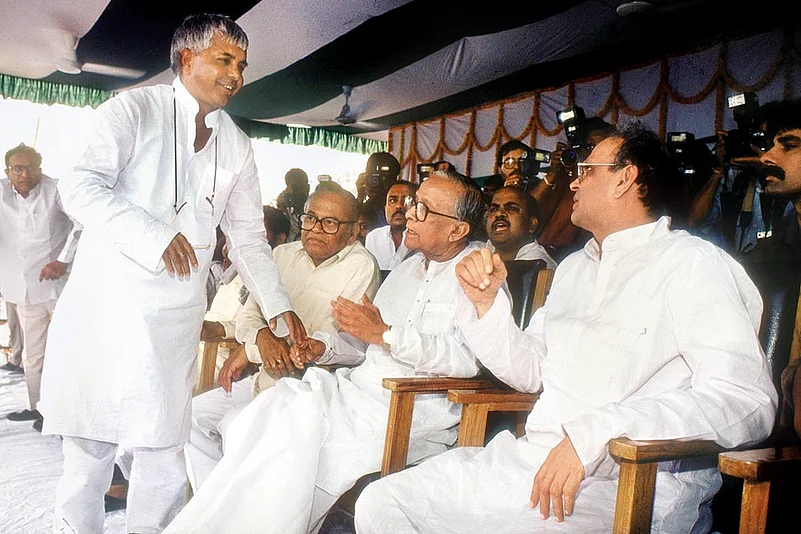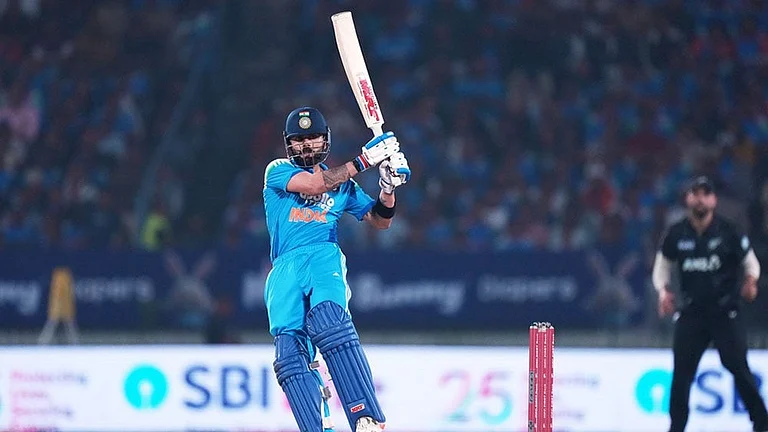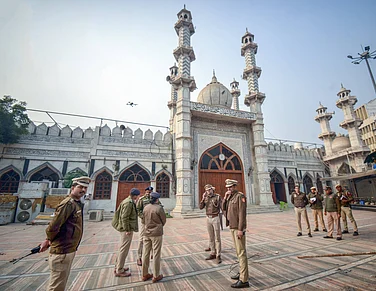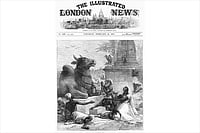For nearly four decades, Laloo Prasad Yadav has been the axis around which politics revolves in Bihar. He is one of the most important political and social figures in the state in the post-independence era—first as a student leader and then as chief minister, either de jure or de facto. Since his conviction in fodder scam cases and serious health problems, he seems forlorn. Age is also catching up. Over and above, the antics of his eldest son, Tej Pratap, to divorce his wife Aishwarya, have not gone down well with him. Incidentally, Laloo’s daughter-in-law has an enviable heritage; her grandfather, Daroga Prasad Rai, was a former CM who had played a significant role to establish Laloo against the might of Ram Lakhan Singh Yadav, once the uncrowned leader of Yadavs in Bihar.
Laloo’s contribution till date and his present relevance can be measured at three levels. First, as a political figure who influenced the national discourse; second, as a figure who changed the social and political configuration in Bihar; and third, his record in the realm of governance and probity.
Laloo had a huge political mileage at the national level in the 1990s. He could influence the decision about a future prime minister from among the non-Congress parties. Indeed, he was once a serious contender for prime ministership. One can also judge his importance from the fact that when, because of the fodder scam case, he had to relinquish his office as Bihar CM for the first time in 1997, it affected the Bombay Stock Exchange.
Similarly, he had a huge impact on the celluloid world. Many films, haircuts and styles of diction had a strong Laloo imprint. Being a symbol of ‘counterculture’ of sorts, even many film villains resembled Laloo. The emerging electronic media during those days also played an important role in building ‘brand Laloo’. This could be possible because, after the Emergency, the discourse around ‘ideology’ got eclipsed in national politics, thanks to the call of partyless democracy by Jaya Prakash Narayan. The Nehruvian ethos in governance was being gradually given up. With the assassination of Indira Gandhi, a consequence of Operation Blue Star, ‘ethno-religious’ mobilisations got a spurt in the country, discourse around secularism being in the decline. The Congress practically abandoned its historic role. In this backdrop, Laloo’s proactive role in stopping L.K. Advani’s rath yatra, which was whipping up a communal conflagration, and in finally arresting him, created a benchmark in the realm of secularism in India. Most strikingly, possible post-Ayodhya communal riots in the state were nipped in their bud by Laloo. Where Mulayam failed, Laloo succeeded. Over and above, Laloo was under the political canopy of then PM V.P. Singh.
All this led him to become a permanent fixture in the political firmament in the country. These INStinctual, nearly inadvertent, steps by Laloo, which may not have been pursued out of an ideological connect, created a permanent breach between Muslims and the Congress. In the process, the entire edifice of the Congress—built around a ‘coalition of extremes’, with the Muslim as an important component—fell apart. This shrank its electoral base, widening the space for satraps like Laloo, who started gaining an influence in the national polity disproportionate to their actual size. Laloo’s appeal had indeed extended beyond India; when he visited Pakistan, he received a massive reception.
Unlike his chief ministerial stint, his record as Union railway minister was relatively better, and the functioning of the ministry under him was an object of research studies conducted by IIM Calcutta and Harvard University. However, the model he held up as the reason for a ‘turnaround’ in the Railways has been contested by his successors.
As regards his contributions as Bihar CM, one may note that the state had witnessed numerous peasant, communist and socialist movements even before he took over. The social justice movement and the imprint of the CPI(ML) had further radicalised Bihar society. While Karpoori Thakur gave an ideological thrust to social change, people like Jaglall Chowdhury, Birchand Patel and Bhola Paswan Shastri had played a significant role in promoting that goal. However, they were coopted by the ruling elite. But two Yadav leaders, one from the north of the state (Daroga Prasad Rai) and another from the south (Ram Lakhan Singh Yadav), played a decisive role in empowerment politics. Along with economic democratisation under Sahajanand Saraswati, the social agenda of the ‘Triveni Sangh’ (of Yadav, Koeri and Kurmi) had considerably galvanised Bihar society. They not only had urban land, but also brought about a kind of bottom-up milk, vegetable and brick capitalism. Even though as a social group, they were never a significant part of the overall state system, their increasing presence in the legislature could not be ignored. Apart from social muscle, they commanded economic fundamentals as well.
Thus, when Laloo took over as the first authentic CM of a non-Congress government in Bihar, he already had huge social and political capital at his disposal. The Mandal Commission further helped Laloo to expand his social base and he became the undisputed leader of the poor in Bihar. In the process, the Left parties got practically liquidated. Their social base shifted to Laloo. With the Muslim constituency already under his command, he became electorally almost invincible. The social justice movement prior to his advent had already consolidated the Upper Backwards (Annexure-II), but Kapoori Thakur set the agenda for the Lower Backwards (Annexure-I) through the Mungerilal Commission. Laloo, as CM, not only brought the state apparatus at the disposal of the subaltern, he also made the Lower Backwards electorally relevant. They could vote freely for the first time only in the 1995 assembly elections. Laloo not only got them elected to the assembly and Parliament, he also made them a part of the state structure, although marginally. In the process, not only did he marginalise the original satraps of the socialist/social justice movements, he also created a wide electoral support base for himself. Bihar is possibly the only state in the country where feudal or elite castes cannot wrest power in the near future, overtly or covertly.
Laloo was essentially a political person, and this was quite apparent in his record in the realm of governance and probity. When it involved his political survival or a critical agenda, he could put the ramshackle state structure to its best possible use. For example, during his tenure, Bihar hardly saw any communal flare-up. Minorities felt happy and contented. But in other matters of governance, he was a pale shadow of Nitish, who does everything with a clinical precision. The state structure of this large state was not only weak, but was practically non-functioning under Laloo; Bihar being the best governed state then, trotted out by a section of vested interests, was nothing but a fiction. State-building was further disadvantaged because of the non-fulfilment of the promised allocation in the Ninth, Tenth and Eleventh Finance Commissions, to the tune of Rs 12,000 crore between 1991 to 2004. In the absence of Finance Commission devolution, most governments in the Hindi heartland states could not get a second term. For this very reason, even Digvijaya Singh had to bite the dust in his attempt to become CM the third time running in Madhya Pradesh. But Laloo and his wife Rabri Devi survived all these disabilities.
On the question of probity, though, Laloo could not come out of Bihar-centric pitfalls. The magnitude of corruption in Bihar was huge during his period. Unlike Gujarat or most other developed states, where ‘turnover-based corruption’ is the order of the day, Bihar faced an ‘input-based corruption’, depriving the state of any development. But it is quite likely that Laloo’s appeal hasn’t yet fully rusted in spite of facing charges in multiple corruption cases, because a substantial section of Bihar’s population still considers him the main architect of the democratisation of Bihar’s political space. ‘Brand Laloo’ has no doubt diminished, yet he will be a force to reckon with in the coming election, even after being behind bars.
(The writer is member-secretary, Asian Development Research Institute, Patna.)






















